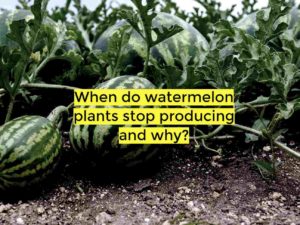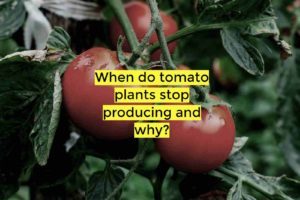In most crops where the root is harvested, the seedlings do not do well after transplanting. They have a hard time adjusting to new environments. It has left many with the question can you transplant beets, and if so, how?
Beet seeds are tiny. Because of their small size, growing beets from seeds is a challenge to many. So, how can you transplant beets? Starting beet seeds indoors will work for you if you’re stuck like I was. You can start by germinating the seeds indoors and then transplant them into pots or garden outside as seedlings.
Beets are easy to transplant. You can start by planting them indoors using a seed tray or planting cups. Harden the seedlings before transplanting beets.
Once the seedlings are ready for transplanting, you carefully remove them from the container and place them in the ground in shallow holes. The planting holes should be the same depth as the level from which the seedling soil reached.
Water the newly transplanted beets generously. Soon, you’ll find that the beets have adapted to the garden or pot. Water helps reduce the shock plants will experience upon transplanting beets outdoors.
Another neat tip to avoid transplanting shock is not sticking seedlings into a dry potting mix. If you saturate the seedlings and the planting site with water right before, there will be little to no transplant shock.
Potting mixes should be watered through at least once before transplanting beets into them.
When can you transplant beets?

Beet seedlings should be transplanted while the weather is still chilly but after any potential for frost has passed. When to transplant is a common question among farmers learning how to grow beets.
Beets can often be transplanted four weeks after the last frost. Transplant success may be aided by early preparation of the garden.
Read Also: What Does Wild Asparagus Look Like And Can You Transplant Them?
How much space do beets need to grow?
Beets need space to form significant and juicy roots. Transplanting beets makes it easy to space them out adequately. One thing you’ll learn about how to grow beets is that it would be harder to plan for spacing when dealing with seeds.
Because beetroots are what you eat, the leaves do not grow too aggressively. You can easily plant them close together. The beet plant leaves will not overshadow each other.
Beet seeds can be planted indoors in rows 0.5inches deep and 1 to 2 inches apart for germination. You then cover the seed with a little soil to keep them moist till germination.
Adequate spacing can be from about 3 to 4 inches apart depending on how much space you have in the pot or garden.
However, if you find the roots clumped close together such that separating them might harm the plant then you don’t have to.
Multi-sowing is a common practice whereby you can clump up to 5 beets close together. In some cases, these clumped beets have performed better than their spaced counterparts.
I remember one time I had beets in 10inch by 8inch. When the time to transplant came, I discovered that the roots had gone all the way to the bottom.
While trying to separate them, the potting soil broke into the top and bottom half damaging the roots. I decided to let the other pots grow. The harvest was good.
Beet seedlings also need to be hardened before transplanting. Seedling hardening protects them from damage by harsh environmental conditions when they are transplanted.
You might like: Can You Transplant Carrots And When
How do you fertilize beets before and after transplanting?
Beets are heavy feeders and will require additional nutrients during their growing period. Therefore, prepared beds should have organic matter put into the soil to promote porosity and supply nutrients.
A comprehensive guide to fertilizing beets is essential in this quest to become a master at how to grow beets.
It’s critical to understand the proper nutrient ratio while fertilizing beets. With the correct nutrients, roots grow larger and have a sweeter flavor. Nitrogen, potassium, and phosphorus are the three main macronutrients that all plants require.
When fertilizing beet plants, use a 10-10-10 which is the ratio of nitrogen to phosphorus to potassium. Begin the process before transplanting beets outdoors or in pots.
Use the 10-10-10 formula to side-dress the plants one to three times with 3 ounces (85 g). Greater rates are required in regions with higher rainfall.
Read More: How Long Do Beets Take To Grow Till Harvest
The majority of places contain enough potassium to support the growth of big roots, but a soil test will identify any inadequacies. If the last number in the ratio, potassium, is low in your soil, you should side-dress with a potassium-rich formula.
Nitrogen is a component of photosynthesis and is what causes leaves to grow. Potassium improves fruit growth and boosts disease resistance. Phosphorus promotes root growth and uptake while also assisting in blossom output.
When beet plants are fertilized with high nitrogen fertilizer, green tops but little root development results. However, nitrogen is required for beet plant fertilizer in order to aid in the development of leaves, which in turn give solar energy in the form of carbohydrates.
The development of beetroots depends heavily on carbohydrate consumption. For optimal plant development, beet feeding instructions must also specify the right amounts of potassium and phosphorus.
Should you thin out beets before or after transplanting?
Thinning is a crucial step in how to grow beets that many farmers will forget. Thinning ensures the beet plants get adequate space to grow.
Because each seed will produce a plant with a fruit that will contain many seeds, space for optimal growth is necessary as I have explained.
What you do is remove the weaker seedlings and leave the stronger seedlings to grow. Since beet plant leaves are edible, you can serve the thinned leaves in a vegetable salad.




